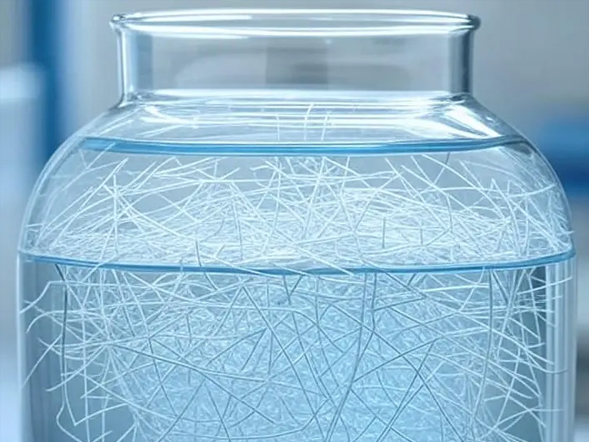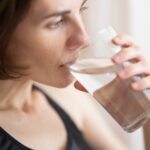Introduction: A Hidden Crisis at the Dinner Table
Plastic is woven into nearly every part of modern life—but now, tiny fragments known as microplastics are showing up in what we eat and drink. These particles, less than 5 millimeters in size, have been detected in seafood, grains, honey, salt, meat, dairy, and even baby food. Drinking water—especially bottled water—has emerged as one of the largest sources of microplastic exposure worldwide.
For families in Central Florida, where water quality is a growing concern, understanding microplastics is essential. This article examines how microplastics infiltrate the food chain, their potential health effects, and how you can protect your home by improving water quality.
How Microplastics Enter the Food Chain
Microplastics enter food through a variety of pathways, including environmental contamination, agricultural practices, processing, packaging, and household storage.
Environmental Contamination
Microplastics in oceans, rivers, lakes, and groundwater are ingested by fish and shellfish, or absorbed by crops irrigated with contaminated water. This makes seafood and grains common sources.
Agricultural Practices
Plastic mulch, irrigation systems, soil coverings, and fertilizers contribute to microplastic buildup in farmland. Studies have detected particles in rice, wheat, and other staple crops.
Processing and Packaging
Plastic packaging and processing equipment also release microplastics—especially when exposed to heat. For example:
- Plastic tea bags release billions of particles in hot water
- Microwaving baby food pouches dramatically increases contamination
- Bottled water leaches microplastics from both the bottle and cap
Household Storage
Using plastic containers for hot food or drink can accelerate microplastic shedding. Reusing plastic bottles also increases exposure.
To reduce contamination, many families install whole-house water filtration systems—a first line of defense against plastic particles in tap water.

Foods Most Commonly Contaminated
Research consistently shows high levels of microplastics in:
- Seafood — especially shellfish
- Sea salt — due to ocean extraction
- Bottled water — one of the most contaminated sources
- Rice and grains — exposed during irrigation and processing
- Honey — from airborne particles
- Meat & dairy — particles found in livestock blood
- Baby food — particularly when microwaved in plastic pouches
Because bottled water contains higher microplastic levels than tap water, using a reverse osmosis system at home drastically reduces contamination.

Health Risks: What Scientists Know Today
Although research is ongoing, scientists are increasingly concerned about the effects of ingesting microplastics. Documented and suspected health impacts include:
- Oxidative stress
- DNA damage
- Hormonal disruption
- Inflammation and immune response
- Neurological effects
- Metabolic disorders
- Reproductive issues
New studies suggest microplastics disrupt gut microbiota, potentially contributing to:
- Depression
- Inflammatory diseases
- Colorectal cancer
Exposure has been documented in infants, children, breast milk, and placentas, raising questions about long-term impacts.
While some regulatory bodies argue that exposure estimates may be overstated, the scientific consensus is clear:
Microplastics pose a significant emerging health concern—and reducing exposure now is essential.
How Drinking Water Increases Microplastic Exposure
Water is one of the most overlooked but largest sources of microplastic ingestion.
Tap Water
Municipal systems do not fully remove microplastics. They enter through:
- Stormwater runoff
- Wastewater effluent
- Agricultural contamination
- Aging infrastructure
This makes household filtration, especially multi-stage systems, a key protective measure.
Bottled Water
Studies show bottled water contains up to 100× more microplastics than tap water.
Causes include:
- Cap friction
- Bottle wall degradation
- Heat exposure (car interiors, garages)
- Reuse of single-use bottles
Installing a drinking water filter lets families avoid bottled water entirely—and prevents unnecessary microplastic exposure.

Regulatory Efforts and Industry Challenges
Governments worldwide are racing to understand and regulate microplastics. Some agencies caution that initial research may overestimate transfer from packaging, while others push for strong restrictions on single-use plastics.
The food industry faces challenges such as:
- High costs of switching to alternative packaging
- Supply chain disruptions
- Pressure for stricter contamination monitoring
Meanwhile, consumers increasingly demand transparency, purity, and safety—especially regarding drinking water.
How to Reduce Microplastic Exposure at Home
Here are the most effective, research-backed steps:
- Install a Water Filtration System
Whole-house filters, reverse osmosis systems, and advanced carbon block filters reduce microplastics dramatically.
👉 Explore solutions: Home Water Filtration Systems
- Avoid Bottled Water
Use filtered tap water stored in glass or stainless steel instead.
- Replace Plastic Containers
Switch to:
- Glass
- Stainless steel
- Ceramic
Avoid heating food in plastic.
- Choose Fresh Foods
Processed foods undergo more plastic contact.
- Choose Better Tea Products
Opt for loose-leaf tea instead of plastic tea bags.
- Limit Microwave Use With Plastic
Use glass containers for reheating.
Why Microplastics Matter for Central Florida Homes
Central Florida faces unique water challenges—including PFAS, agricultural runoff, and aging water systems. Microplastics have now joined the list of emerging contaminants affecting local water quality.
For families seeking long-term protection, investing in a professional water treatment system is one of the most effective ways to safeguard health.

Conclusion: Cleaner Water, Cleaner Meals, Better Health
Microplastics are an invisible but growing threat. While global regulations evolve, homeowners can take practical steps today—starting with safer, cleaner drinking water.
For families in Central Florida, Central Florida Water Treatment Inc. offers industry-leading solutions to reduce microplastics and other emerging contaminants right at the source.
Cleaner water means a healthier home and peace of mind in an increasingly plastic world.








